American Visitors Depicted by Japanese Artists
The 1860s saw the emergence of 'Yokohama-e', a type of woodblock print dedicated to the representation of foreigners visiting Japan.
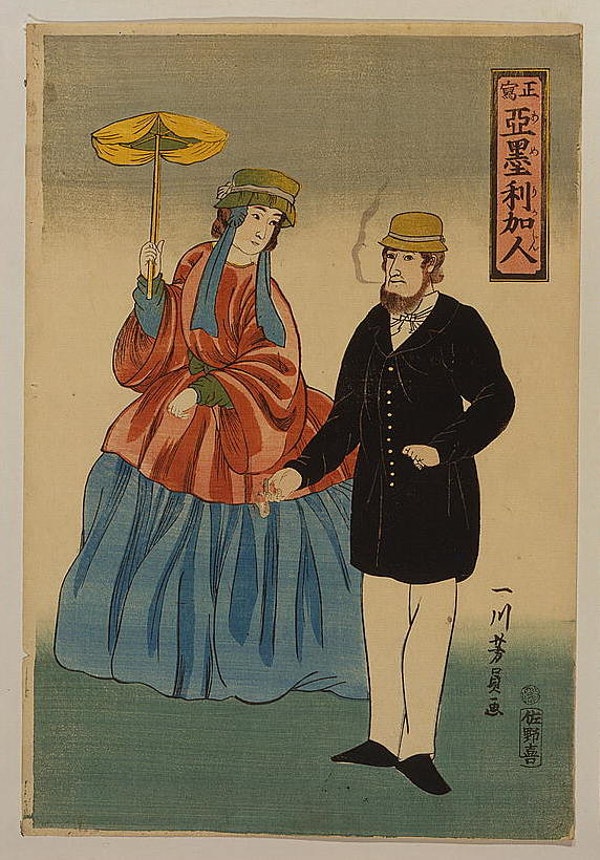
Yoshikazu Utagawa, “Shosha - Amerikajin”, 1861 © Public domain
A separate genre within the larger ukiyo-e family, those Japanese woodblock prints whose name translates into English as ‘pictures of the floating world’, Yokohama-e do not depict flora and fauna but rather foreigners, particularly North Americans, who were on Japanese soil in the 1860s.
These works were mainly produced by the two artists central to this artistic movement: Yoshitora Utagawa and Yoshizaku Utagawa. For almost twenty years, they captured images of foreigners discovering Japan, which at the time was slowly opening up to the West.
Documenting new developments
From 1639, Japan entered an isolationist era known as sakoku that would last for over two centuries. It was not until 1854, under the coercion of Commodore Perry, that the country signed a peace treaty re-establishing diplomatic and trading relations with the USA. In 1859, the port of Yokohama became one of the main ports for trade with America. As a result, the North American population was larger there than anywhere else in Japan, giving rise to this new art form of Yokohama-e.
The American presence in Japanese territory continues to be documented today, particularly by photographers like Greg Girard in his series Hotel Okinawa.
More information about Yokohama-e can be found on the Library of Congress website.
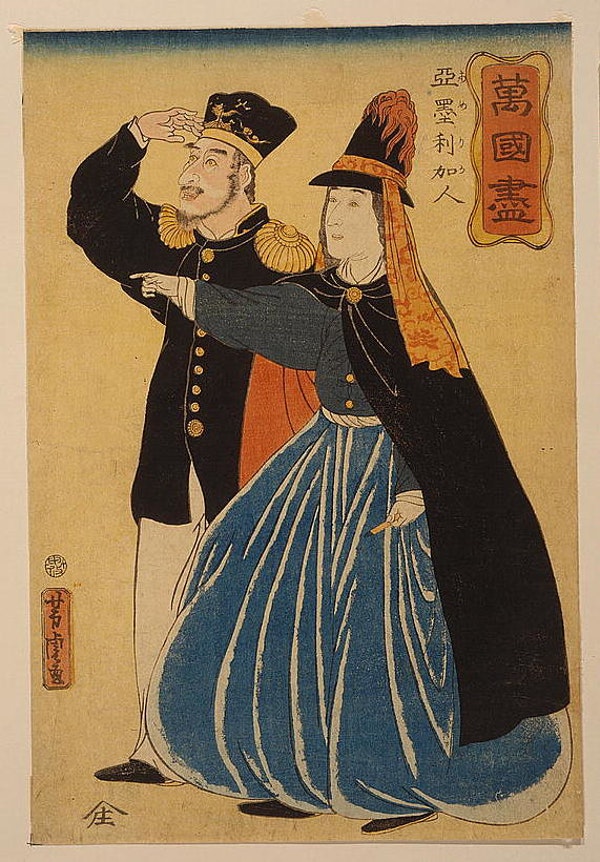
Yoshitora Utagawa, 'Bankoku zukushi - Amerikajin', 1860 © Public domain
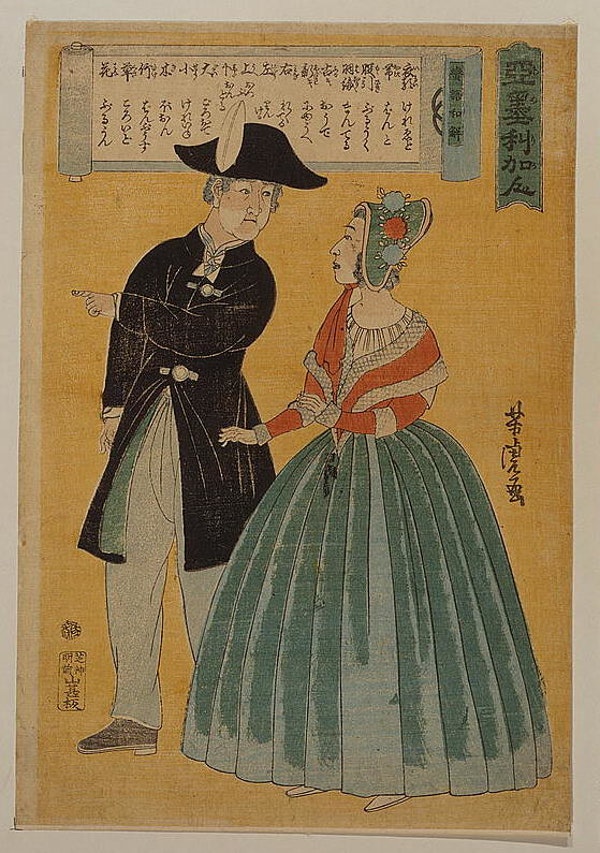
Yoshitora Utagawa, 'Amerikajin - Bango Wakai', 1863 © Public domain
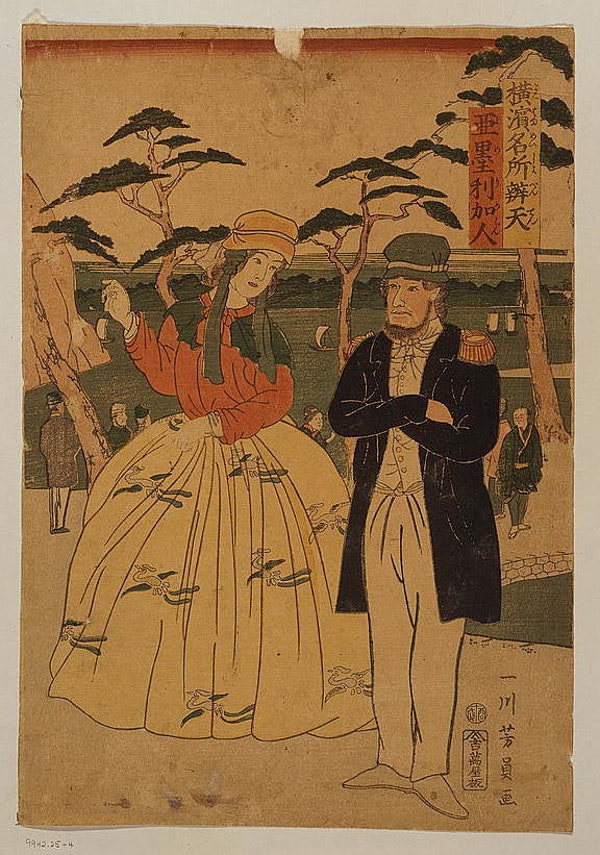
Yoshikazu Utagawa, 'Yokohama meisho benten: Amerikajin', 1861 © Public domain
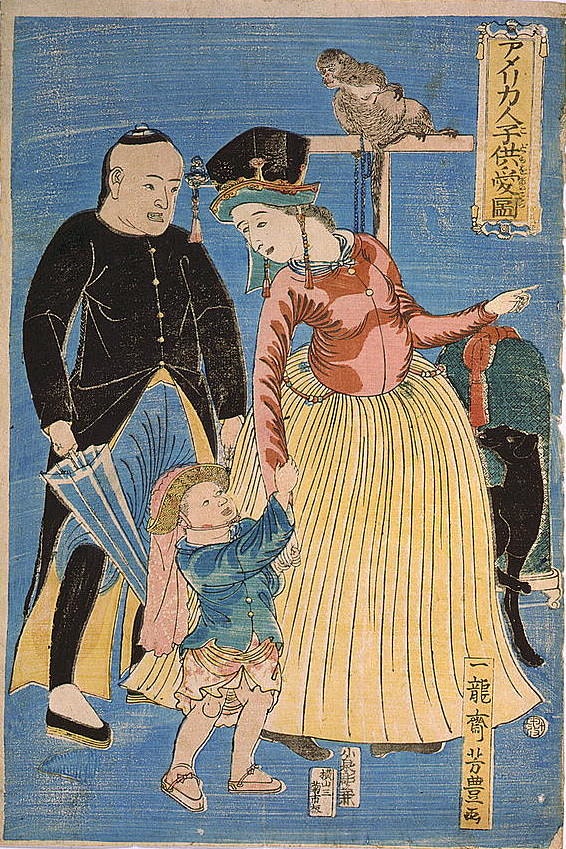
Yoshitoyo Utagawa, 'Amerikajin Kodomo O Aisu Zu', 1860 © Public Domain
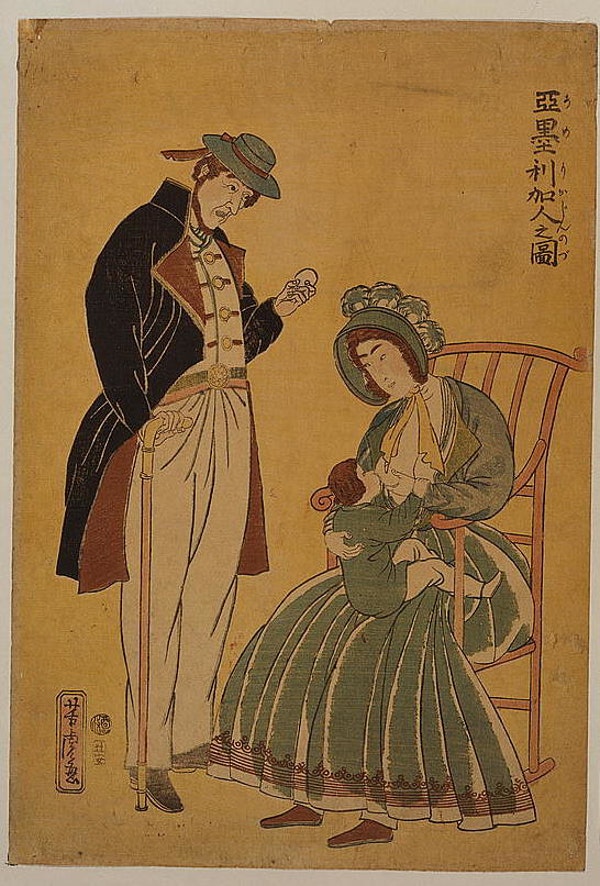
Yoshitora Utagawa, 'Amerikajin No Zu', 1861 © Public domain
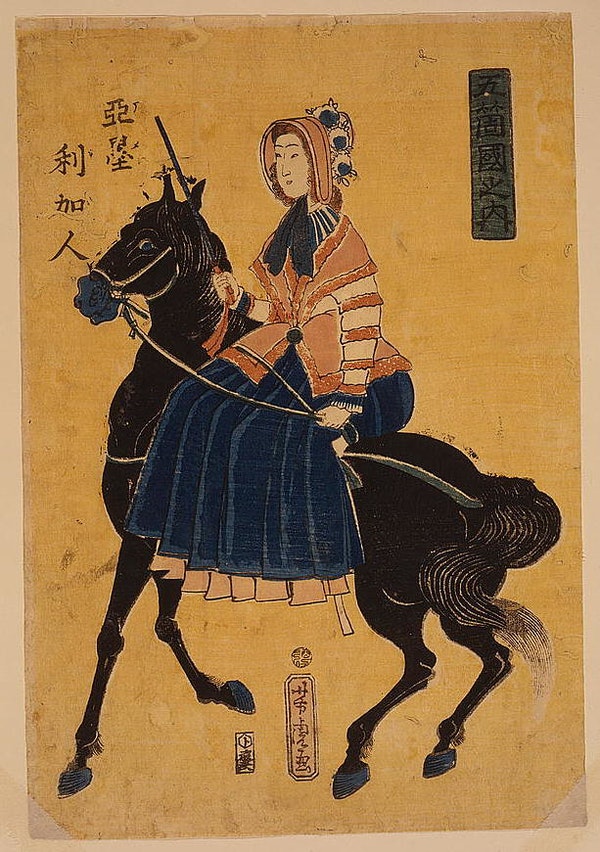
Yoshitora Utagawa, 'Gokakoku no uchi - Amerikajin', 1861 © Public domain
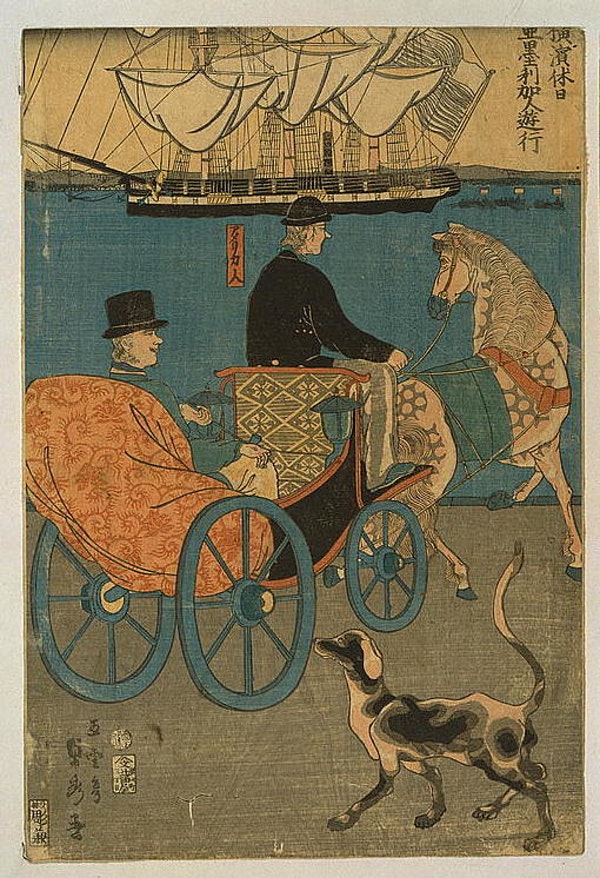
Sadahide Utagawa, 'Yokohama kyujitsu Amerikajin yuko', 1861 © Public domain
TRENDING
-
The Tattoos that Marked the Criminals of the Edo Period
Traditional tattoos were strong signifiers; murderers had head tattoos, while theft might result in an arm tattoo.

-
Chiharu Shiota, Red Threads of the Soul
Last year, more than 660,000 people visited the retrospective 'Chiharu Shiota: The Soul Trembles' exhibit at the Mori Art Museum.

-
‘Before Doubting Others, Doubt Yourself. Who Can Truly Say a Dish Isn’t What It Used to Be?’
In ‘A Non-Conformist’s Guide to Surviving Society’, author Satoshi Ogawa shares his strategies for navigating everyday life.

-
The Story of Sada Yacco, the Geisha who Bewitched Europe
Described by Dazed magazine as the first beauty influencer, she has been restored to her former glory since 2019.

-
Ito Jakuchu's Naturalist Paintings
From 15 September until 14 October 2018, the Petit Palais showcased the artist's iconic ‘Images of the Colourful Realm of Living Beings’.





